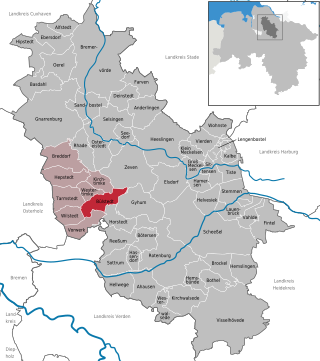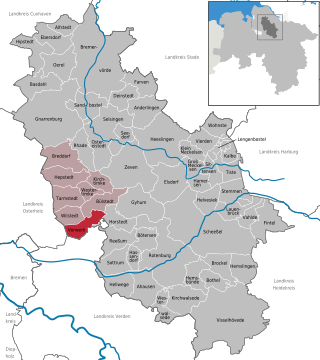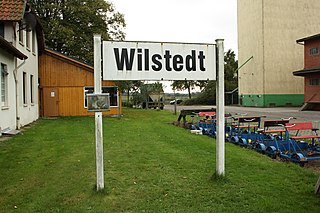
The Prince-Archbishopric of Bremen — not to be confused with the modern Archdiocese of Hamburg, founded in 1994 — was an ecclesiastical principality (787–1566/1648) of the Holy Roman Empire and the Catholic Church that after its definitive secularization in 1648 became the hereditary Duchy of Bremen. The prince-archbishopric, which was under the secular rule of the archbishop, consisted of about a third of the diocesan territory. The city of Bremen was de facto and de jure not part of the prince-archbishopric. Most of the prince-archbishopric lay rather in the area to the north of the city of Bremen, between the Weser and Elbe rivers. Even more confusingly, parts of the prince-archbishopric belonged in religious respect to the neighbouring Diocese of Verden, making up 10% of its diocesan territory.

Bremen-Verden, formally the Duchies of Bremen and Verden, were two territories and immediate fiefs of the Holy Roman Empire, which emerged and gained imperial immediacy in 1180. By their original constitution they were prince-bishoprics of the Archdiocese of Bremen and Bishopric of Verden.

Harsefeld is a municipality situated south-west of Hamburg (Germany). Harsefeld has a population of c. 12,500 and belongs to the district of Stade, Lower Saxony.

Zeven [] is a town in the district of Rotenburg, in Lower Saxony, Germany. It has a population of around 14,000. The nearest large towns are Bremerhaven, Bremen and Hamburg. It is situated approximately 22 km northwest of Rotenburg, and 40 km northeast of Bremen. Zeven is also the seat of the Samtgemeinde Zeven.

Schiffdorf is a municipality in the district of Cuxhaven, in Lower Saxony, Germany. It is situated at the eastern boundary of the Bremian city of Bremerhaven, and 35 kilometers south of Cuxhaven.

Hagen im Bremischen is a municipality in the district of Cuxhaven, in Lower Saxony, Germany. It is situated approximately 20 km south of Bremerhaven, and 35 km northwest of Bremen. Hagen was the seat of the former Samtgemeinde Hagen.

Gnarrenburg is a municipality in the district of Rotenburg, in Lower Saxony, Germany. It is situated approximately 15 km southwest of Bremervörde, and 40 km northeast of Bremen.

Tarmstedt is a municipality in the district of Rotenburg in Lower Saxony, Germany. It is situated approximately 25 km northwest of Rotenburg, and 25 km northeast of Bremen.

Anderlingen is a municipality in the district of Rotenburg, in Lower Saxony, Germany.

Basdahl is a municipality in the district of Rotenburg, in Lower Saxony, Germany.

Bülstedt is a municipality in the district of Rotenburg, in Lower Saxony, Germany.

Farven is a municipality in the district of Rotenburg, in Lower Saxony, Germany.

Hamersen is a municipality in the district of Rotenburg, in Lower Saxony, Germany.

Hepstedt is a municipality in the district of Rotenburg, in Lower Saxony, Germany.

Kirchtimke is a municipality in the district of Rotenburg, in Lower Saxony, Germany.

Tiste is a municipality in the district of Rotenburg, in Lower Saxony, Germany.

Vorwerk is a municipality in the district of Rotenburg, in Lower Saxony, Germany.

Wilstedt is a municipality in the district of Rotenburg, in Lower Saxony, Germany.

The Prince-Bishopric of Verden was an ecclesiastical principality of the Holy Roman Empire that was located in what is today the state of Lower Saxony in Germany. Verden had been a diocese of the Catholic Church since the middle of the 8th century. The state was disestablished in 1648. The territory was managed by secular lords on behalf of the Bishop of Verden. As a Prince-Bishopric of the Empire, the territory of the state was not identical with that of the bishopric, but was located within its boundaries and made up about a quarter of the diocesan area. By the terms of the Peace of Westphalia, the Prince-Bishopric was disestablished and a new entity was established, the Duchies of Bremen and Verden.
























